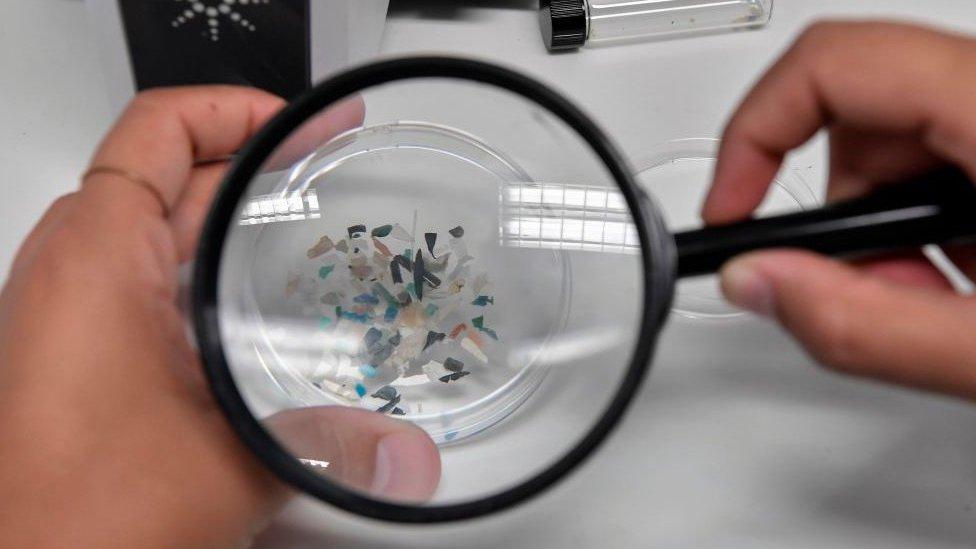Microplastics: Research finds almost 100 times more microplastics in UK coastline than six years ago
- Published
- comments

By looking closely at samples of water, scientists can discover what plastic has been left behind
Have you heard of microplastics? They are tiny pieces of plastic that are made when larger bits of plastic break down.
This is a type of plastic pollution, where plastic is damaging natural environments.
A new study from the University of Portsmouth has found 100 times more microplastics in the coast around the UK than there were six years ago.
This research was not done in a lab, instead the University gathered its data through three rowing teams that headed on a 2,000 mile row around the UK.
How are microplastics formed?
Each year, 400 million tonnes of plastic is produced and 40% of that is single-use - plastic only used once before it's thrown away
When larger pieces of plastic such as plastic bottles break down, they can turn into smaller pieces. Anything smaller than 5mm is called a microplastic - so glitter counts as a microplastic.
You do get some pieces that are even smaller - which are called nanoplastics. These are pieces of plastic that we can't see with the human eye.
These plastics pollute the environment and create health problems for animals, as they can easily be ingested.
Last year it was found that rare seabirds have been eating glitter and other microplastics found in the sea.
What does this new study say?
Plastic waste left by the sea is leading to microplastics in the water
Scientists from the University of Portsmouth collected information on microplastics by working with a team of rowers taking on a huge rowing challenge.
They rowed all around the coast of the UK, which is 2,000 miles of water.
The researchers then compared the data with data from a different study done in 2017, by the UK's centre for Fishing and Agriculture science.
In 2017 there were 0 to 1.5 microplastics per cubic metre of seawater - the new study found that now there is 0 to 121 microplastics. This is nearly 100 times more than 2017.
What can we do about plastic pollution?
Last year, a global agreement was made to try and tackle plastic pollution.
World leaders have until 2024 to agree the plastic pollution treaty and how the deal will be paid for.
Around 40% of plastic produced each year is single use, meaning it can't really be used again. Single-use plastic are things like crisp packets, plastic carrier bags or plastic drinks bottles.
Mounds of wet wipes which contain plastic are reshaping the River Thames
- Published1 May 2020
- Published13 November 2022
